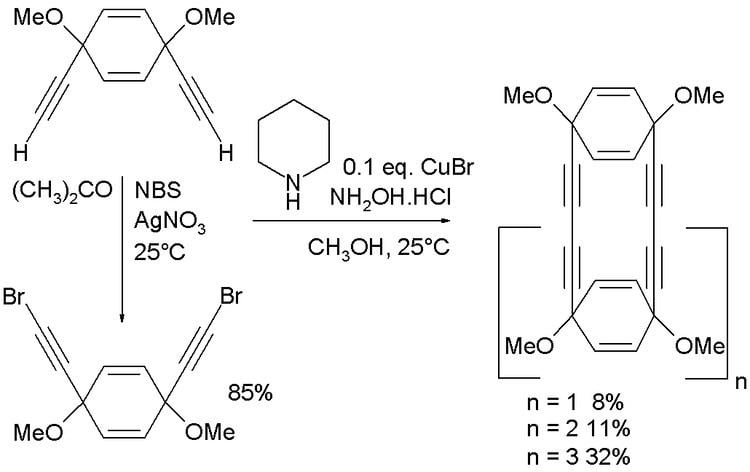 | ||
Named after Paul CadiotWladyslav Chodkiewicz Organic Chemistry Portal cadiot-chodkiewicz-coupling | ||
The Cadiot–Chodkiewicz coupling in organic chemistry is a coupling reaction between a terminal alkyne and a haloalkyne catalyzed by a copper(I) salt such as copper(I) bromide and an amine base. The reaction product is a 1,3-diyne or di-alkyne.
The reaction mechanism involves deprotonation by base of the terminal alkyne proton followed by formation of a copper(I) acetylide. A cycle of oxidative addition and reductive elimination on the copper centre then creates a new carbon-carbon bond.
Related couplings are the Glaser coupling and the Eglinton coupling.
Scope
In one study the Cadiot–Chodkiewicz coupling has been applied in the synthesis of acetylene macrocycles starting from cis-1,4-diethynyl-1,4-dimethoxycyclohexa-2,5-diene. This compound is also the starting material for the dibromide through NBS and silver nitrate:
The coupling reaction itself takes place in methanol with piperidine, the hydrochloric acid salt of hydroxylamine and copper(I) bromide.
